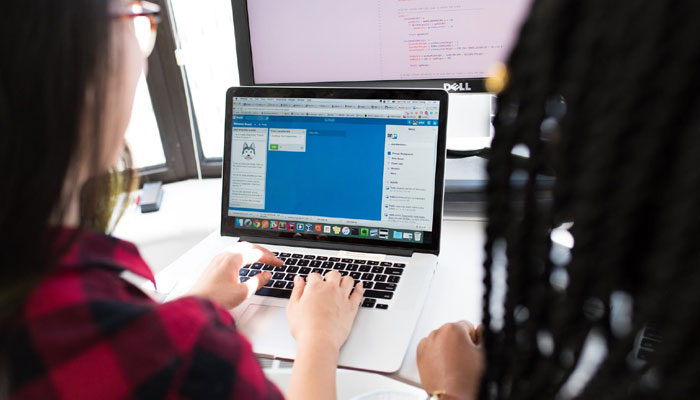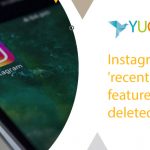Education Industry: Covid-19 forced universities across India, and indeed the world, to suspend physical classrooms and move on to online classrooms. While for most private universities in India this transition has been smooth, the public ones are still adapting. There have also been discussions about the nature of classes, and the future of examination and evaluation — whether or not they can be conducted online.
While the faculty is struggling with new ways to manage this sudden transition to online education, students remain attached to their mobile phones and computer screens. If the lockdowns were to continue for some time, how would it affect higher education? What are some of the more profound issues which require introspection? And what does this mean for the students who are perusing their educational goals? The short answer, the first response to this, is online education.
Online education is carried out in two ways. The first is the use of recorded classes, which are referred to as Massive Open Online Course (MOOCs) when opened to the public. The second is conducted as webinars, or zoom sessions, via live online classes. In addition to stable IT infrastructure and faculty members who are comfortable teaching online, universities require high-speed internet and educational delivery platforms or learning management systems. Students also need high-speed internet and computers/mobiles to attend or watch pre-recorded classes in these sessions.
Focusing on the latter of the two, here are 8 ways live streaming is going to change the future of learning.
1. Methodology of Teaching – Education Industry

In the past, we have traditionally learned by sitting in a classroom and listening as a “required” study to a boring “reading” about a particular topic from a curriculum prepared by a school board. A few weeks later a review sheet was given and we were told to take a test to see how well we had “learned.” The end result was that the geniuses among us used to “cram” the night before the examination, ended up with an ‘A’ or a 95, and the rest of us were graded to a curve based on their results.
Three months later, Fast-forward and this same student is clueless about the material for which the high grade was given when asked. All this means the student did not really learn the material and that’s one of the reasons why traditional teaching methodology has failed. The use of live streaming for education modifies the teaching methodology.
Students will be able to watch experts in their field with live streaming, as they solve problems in real-time. This is more conducive to learning, as the studies show when we are able to visualize we learn more. The Livecoding.tv platform is a good example of this, where thousands of coders learn to code every day by watching engineers live code.
2. Performance Metrics
This is probably one of the most profound changes that from an administrative point of view will affect the future of education. With this, administrators will be able to create and test new methodologies conducive to the student of the 21st century, who does not learn through traditional methods of teaching.
The future live streaming platform will integrate authoring tools that will enable teachers and administrators to automatically detect the preferences and requirements of the students, allowing them to customize the student’s online learning experience. They will also automatically be able to evaluate the knowledge and skill set of the students.
3. Reduction in Cost – Education Industry

Live streaming will change the future of education in the not-so-distant future, by drastically lowering costs. For even if live streaming sites charge a subscription for their service, it will still be substantially lower than today’s astronomical cost of education. For example, at a public high school in Jamaica, the average school fee for a semester is about US$ 120 plus another $120 for books.
Additionally, there are ancillary fees to be paid, and costs of transportation/lunch are factoring in. Altogether, a parent can spend up to US$ 2000 per semester on sending a 14-year-old to school. That figure in other parts of the world could be immensely higher. With live streaming, on the other hand, the biggest cost will be the monthly Internet and electricity costs, as subscriptions should run around $50 / month, $200 / semester based on the current trend and what is foreseen for the future. You can do the math.
Read More:
- HOW LIVE STREAMING IN TELEMEDICINE IS HELPFUL FOR PEOPLE?
- 6 REASONS WHY MOBILE-FIRST APPROACH IS IMPORTANT FOR YOUR WEBSITE
4. Interactivity
Another way to change the future of education is through interactivity, live streaming. Live streaming allows interaction beyond and beyond the experience in the classroom. Think about Google meets, Zoom, Hangout, Facebook live, etc. Users in any part of the world can join in on the classes. With live streaming, teachers and students can interact face to face no matter where they are located. Viewers on a live stream, while watching the lesson, can ask the teacher questions via chat.
The videos are recorded and subsequently, students can share them with their peers. Other teachers can evaluate and give the teacher suggestions. Hadley Ferguson from Edcamp Foundation said, “With live streaming, students can reach out beyond the walls of their classrooms to interact with other students, other teachers, and renowned authors, scientists, and experts to enhance their learning.”
5. Collaboration
Collaboration is the piggybacking off of interactivity; another way live streaming will change the future of education. Companies such as Cisco and IBM currently use the live streaming platform to hold interviews, on-the-job training for employees, meetings, etc. Within the educational context, it is not a big stretch for teachers and students to collaborate among themselves and, where necessary, with parents and even administrators.
You can complete group projects by using collaborative software. Live streaming brings together all the players who due to their geographical location would have been physically handicapped. College professors often find it difficult to get to their classes on time due to other tenure-related commitments, for example, but with live streaming, they can still conduct their classes from wherever they are.
6. Accessibility and hireability
Another way live streaming can change education’s future is through accessibility and hireability. What this means is that teachers and students are going to be more accessible to people looking to hire. We were raised to believe so that we could get a meaningful job that we had to finish high school, go to college, then apply for our dream job. Sites such as Livecoding.tv show that that is a thing of the past. The two companies in Baltimore and San Francisco recently hired Dyerrington and JDdesign, all because representatives of the respective companies watched them live code.
Future education will facilitate lower unemployment rates; as well-performing students can be hired on-the-spot at whatever age they show skill. Teachers, too, can be hired to do contractual work for individuals, businesses, and even nations, as they are now available through live streaming around the world.
7. Diversity
As a follow-up to #1 above, diversity is what we are talking about, and we are not talking about racial equality, although that playing field is certainly levied on live streaming platforms. Instead, we talk about the diversity of topics students can learn. The future curriculum will change dramatically, as more and more teachers will be able to introduce aspects of a subject area that were not possible due to the nature of the subject matter. For example, let’s use music. Live-coded music on Livecoding.tv is now “a thing”.
British engineer Sam Aaron is among the pioneers of modern live coding music. He developed the software, SonicPi, that is used for teaching music in schools, among other things. Fellow British engineer Joseph Wilk, meanwhile, is using SonicPi and Ruby to bend light samples. On Livecoding.tv he writes code for generating music. With live streaming, music teachers around the world will be able to use live streaming platforms to help students identify music patterns, etc.
8. Mobile Learning

Mobile learning has become the new “shiny object”. We love to possess and spend time playing with it. But unlike most shiny objects that soon lose their appeal, mLearning is here to stay, as it is affectionately termed. According to John Sherman in his article “Why You Need To Start Thinking About Mobile Learning”, recent studies found that 59 percent of students (in the United States) had completed some kind of coursework on their mobile phone, which is an indication of how education will change in the future.
He lists the benefits of mobile learning, higher retention rate, and the ability, among other things, to access a wide range of multimedia. The ubiquitous nature of this device is contextualized when we read reports like TIME’s Qualcomm survey stating that 84 percent of respondents couldn’t go a day without their cell phones in their hands while 44 percent would leave their wallets at home, but would never leave their cell phones. Considering that the analphabetism rate among young people worldwide is 89.5 percent, this is a huge demographic target for mLearning. Live streaming is almost synonymous with mLearning, as one can watch and learn live streams through this medium. MLearning enables students to take the “classes” from anywhere in the world at any time.
Conclusion
Live streaming has been around for some time now and will be here for some time. Google meets, Zoom, Meerkat, Periscope and Facebook Live provide us with a glimpse of what the future holds for live streaming. Websites such as YouTube enable people from all over the world to stream their videos and to connect via live streaming with others.
The education sector won’t be immune to its presence. The question actually isn’t whether, but when live streaming changes the future of education.
























